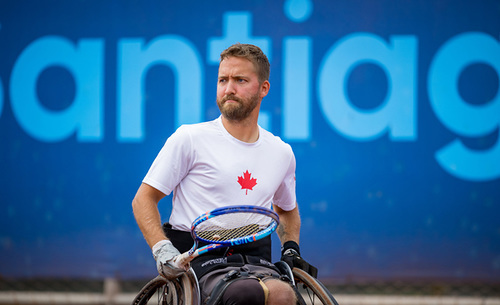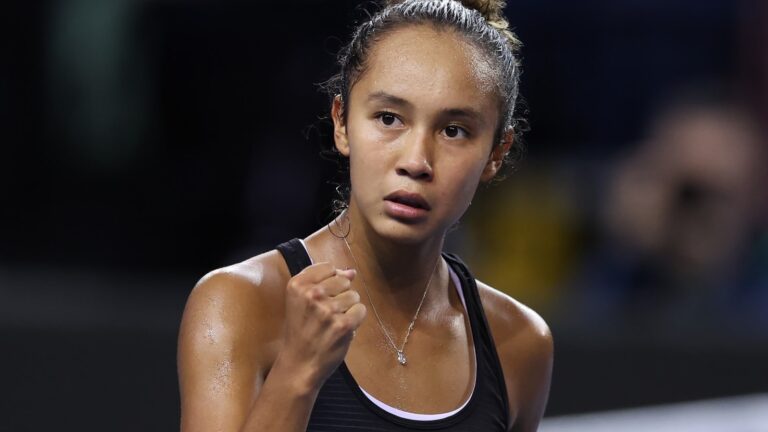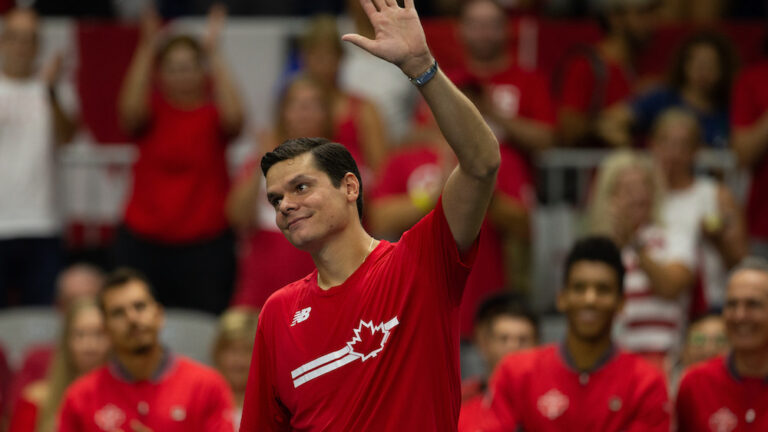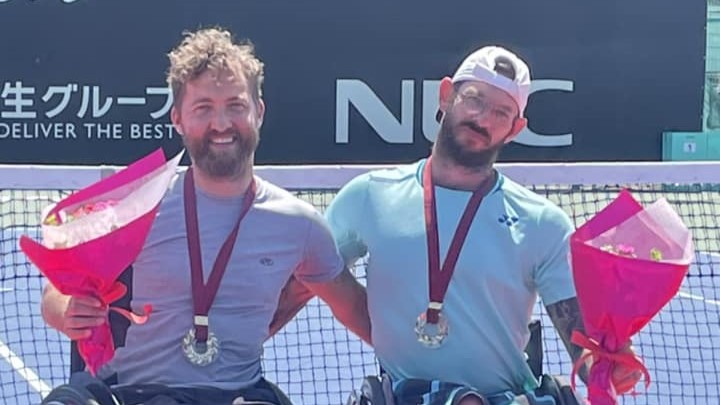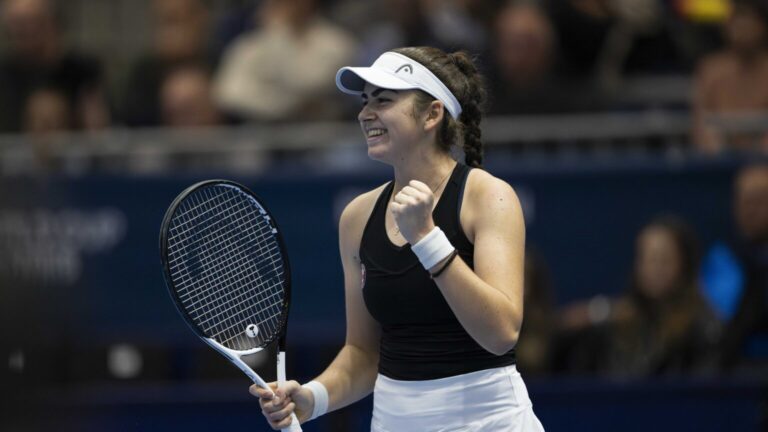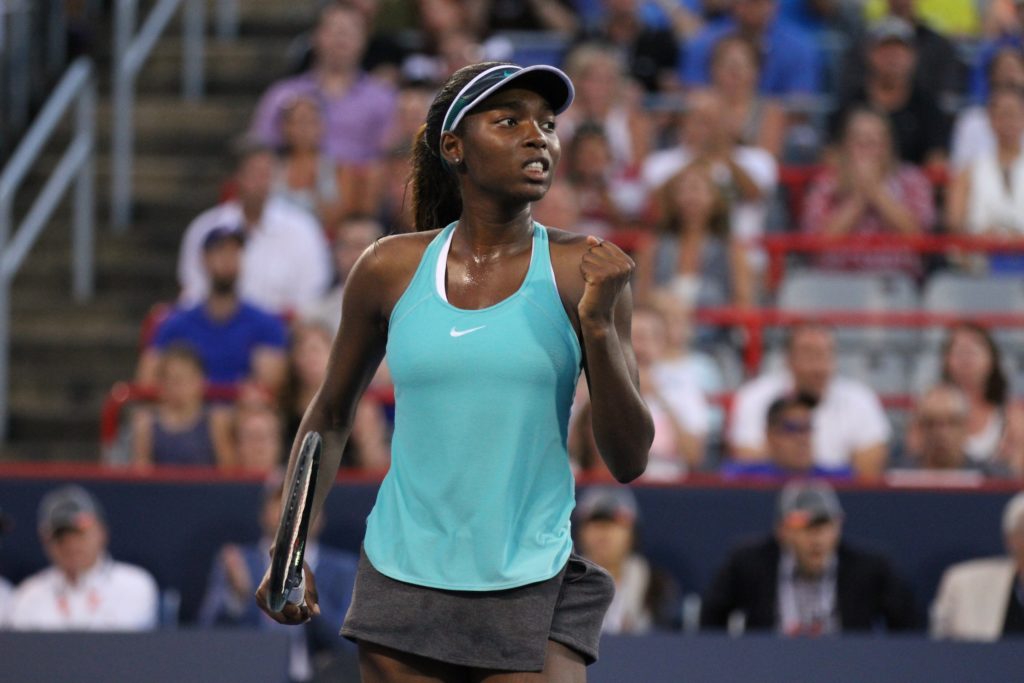
Photo : Tennis Canada
The National Bank Open officially gets underway on August 7 with the draw ceremonies in Montréal and Toronto. Tom Tebbutt and I will have the great pleasure of keeping you updated on both tournaments throughout the week.
(For a quick reminder of the health and safety measures in place for fans and players, scroll down.)
Speaking of Toronto, expect to see Shapovalov, Auger-Aliassime, Raonic, Pospisil, Diez, Polansky and Schnur out on the courts. In Montréal, Andreescu, Fernandez, Marino, Zhao and Abanda will all be action.
Wait. What?
Françoise Abanda?
Yes! The National Bank Open is the first step in the Montrealer’s return to the WTA after a long hiatus.
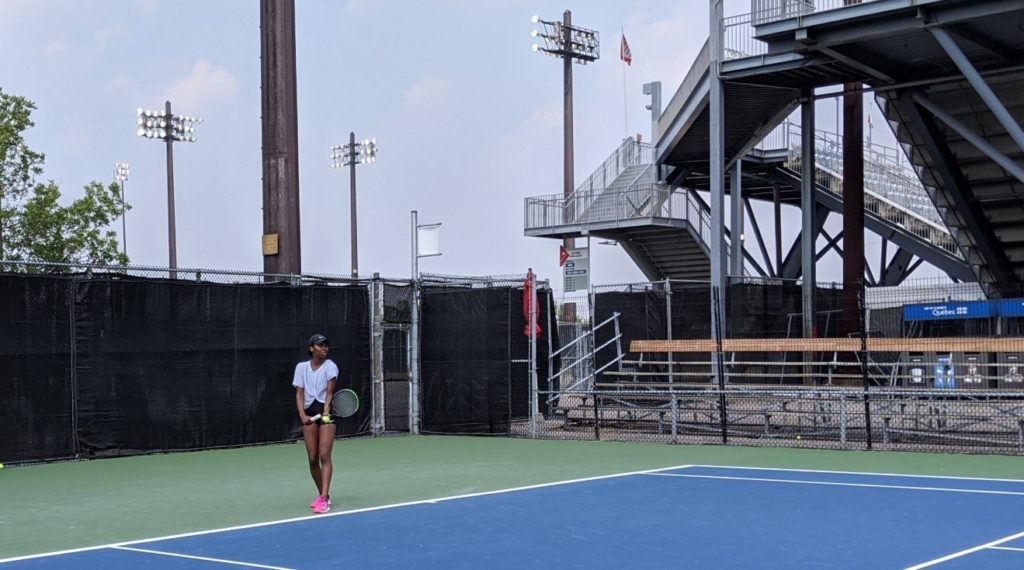
The pandemic and a break from tennis relegated Françoise to No.352. Knowing she still has the talent and potential to face any players in the Top 100—and Tennis Canada’s dedication to including its own athletes in their home event—it’s no surprise that her name would be added to the list of wild cards for the qualifying event of the 2021 NBO.
Françoise has certainly come a long way.
With the tournament just three weeks away, I caught up with her after a training session. She seemed happy and relieved to (finally) be seeing the light at the end of the tunnel.
“It’s positive. Now, it’s positive!” she exclaims with a sigh. For once, every part of her is feeling 100%. “Especially after the past few months. I hardly played at all. I caught COVID-19 this winter in Florida. Then, I took a medical break and decided not to travel to get my body and spirit healthy. Now, I’m happy to get back to training and soon to competition.”
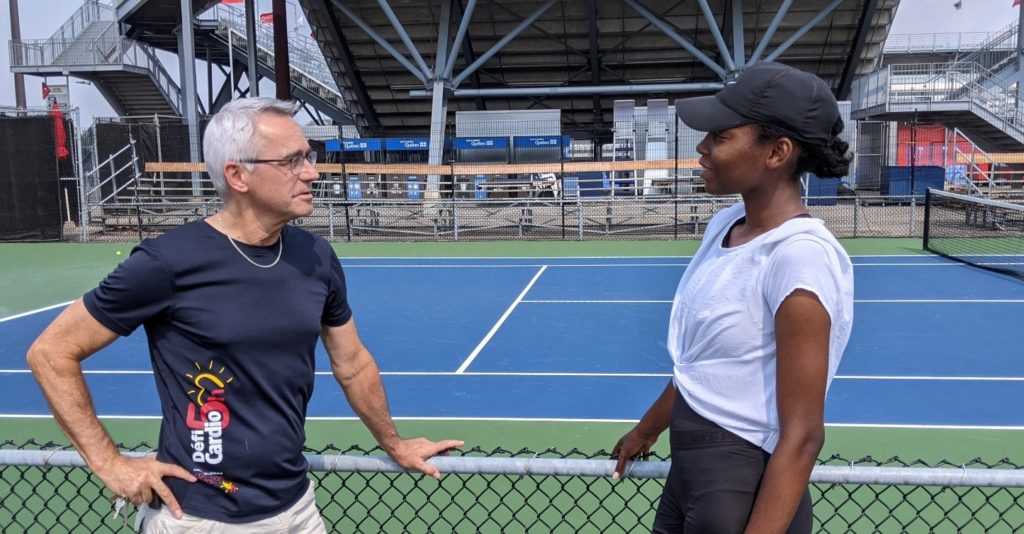
And who was out there with her? None other than Sylvain Bruneau, Bianca Andreescu’s former coach and the head coach of women’s professional and transition tennis. He’s currently standing in for Francisco Sanchez (Leylah Annie Fernandez’s former coach), who’s been working with Abanda these past few months.
I asked Sylvain what he thinks about Françoise’s progress:
It’s important to clarify one thing—and Françoise will be the first to say it—she’s nowhere near the level she was at. She’s getting back to tennis after a long period without competing and only a little bit of training.
Sylvain Bruneau
Still, he likes what he sees. “Françoise is a talented player,” he adds. She’s very fortunate: she has extraordinary hands, really feels the ball and has a flair for the game. She’s a smart player. And despite the fact that she hasn’t been training very much and took a lot of time off, I’m pleasantly surprised.”
Abanda is very grateful to be working with a pinch hitter as great as Sylvain Bruneau, with whom she competed in several Billie Jean King Cup matches when he was captain of the national squad.
He was my coach when I was a junior and at Billie Jean King Cup. It’s easy because we’ve known each other for a long time. He knows my tennis really well, so it’s super cool to have him. I’m making the most of his coaching and considering all his input to make small adjustments.
Françoise Abanda
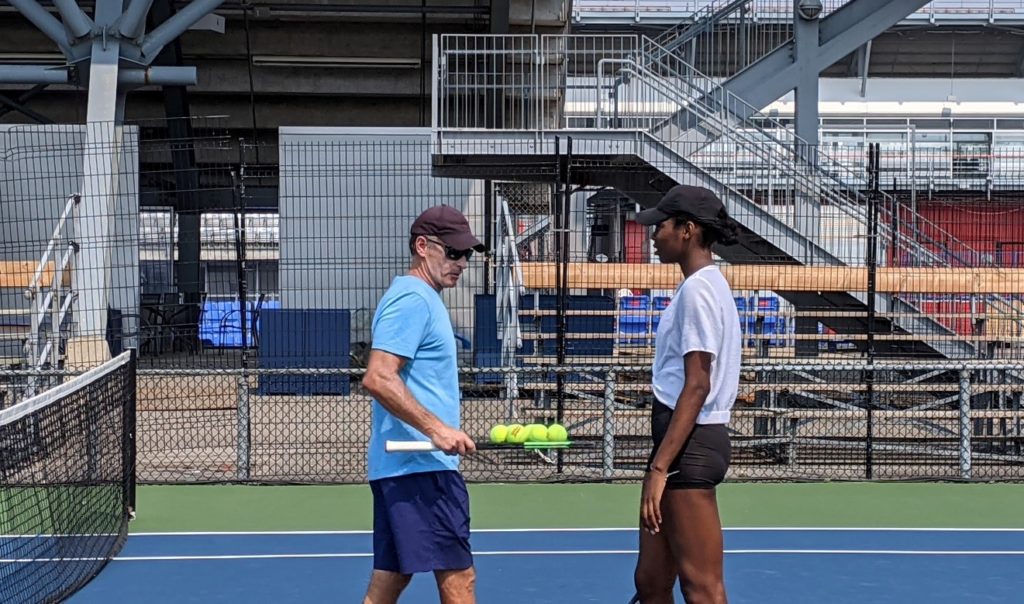
What about a wild card for the National Bank Open? Bruneau confirmed that it’s not out of the question. “It’ll be for the qualifying event, of course,” he says. “You have to learn to walk before you can run. And Françoise needs to hit a lot of balls and play a lot of simulated matches. But for the quallies, that would be great.”
Let’s not forget that Françoise is only 24. She played in her first pro tournaments when she was 15, in 2012. By 17, she was No. 175 in the world and reached a career high ranking of No.111 in October 2017 at the age of 20.
Despite a string of injuries, she still had records of 17-9 in 2019 and 8-4 in 2020. This season, she’s only played in the qualifying events of two tournaments, Rome (Georgia) and Orlando (Florida), where she gained two wins and suffered two losses before getting knocked out by COVID-19.
Her highest highs came at Billie Jean King Cup in February 2017, when she sent No. 51 Yaroslava Shvedova and No.31 Yulia Putintseva of Kazakhstan packing in two sets apiece. She was ranked No.185.
In 2018, then No.191, Abanda also impressed in Montréal, where she defeated No. 47 Kirsten Flipkens of Belgium in the opening round.
All of her major wins have come in Montréal, so it’s no stretch to imagine what could happen this summer.
“I haven’t competed in a tournament in five months, but I wouldn’t want to miss Montréal. I know there will only be fans on Centre Court, but at least I’ll be at home and I won’t have to travel. That’s a good start,” she explains. “I feel good mentally, and I’m confident. I obviously won’t have objectives like getting to one round or another. Just playing and feeling good on the court. Having fun. I feel I can get wins if everything goes well, and then build on that.”
And then, where to?
“I’m registered in Cleveland and Chicago ahead of the US Open. We’ll see how the rankings evolve, when we risk losing points and things like that. There are no ITF events in the US in the coming months, so we’ll try to find alternatives.”
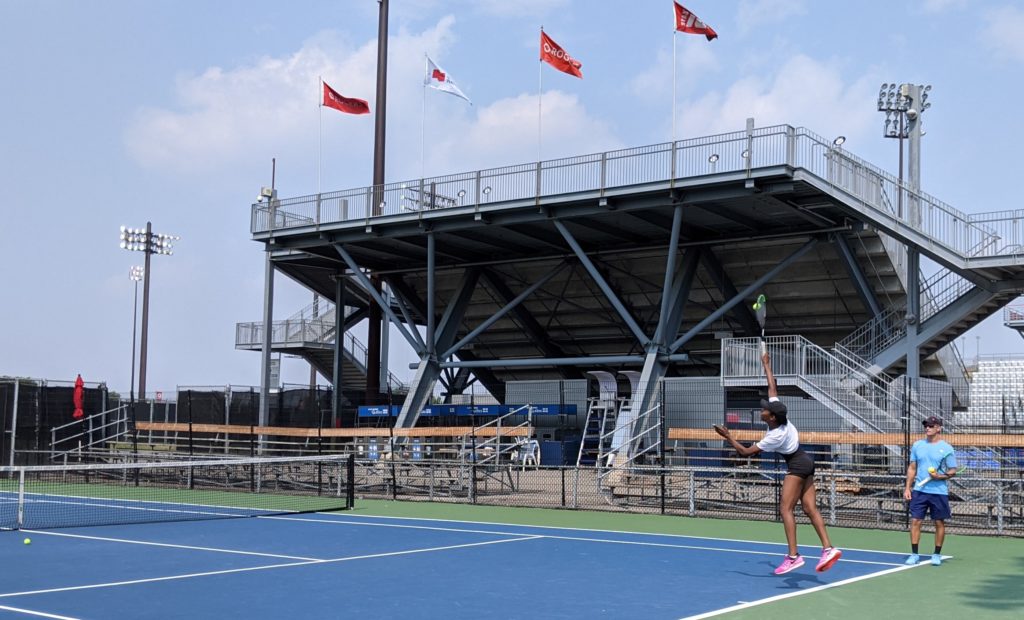
Why only 5,000 fans at the National Bank Open?
Many of you wrote to me to express your surprise and disappointment that only 5,000 ticket holders would be admitted to each session of the National Bank Open at IGA Stadium.
Even though the governments of Québec and Ontario are now allowing 15,000 people at outdoor events, the maximum capacity for the tournament in Montréal still sits at 5,000.
I asked organizers about the numbers, and here’s your answer:
We had to submit very strict protocols to create a bubble for the athletes and international workers. The section of the site that includes the training courts is reserved for them. In Montréal, we had to install a large walkway at great cost so players could go to and from the courts without being in contact with the public.
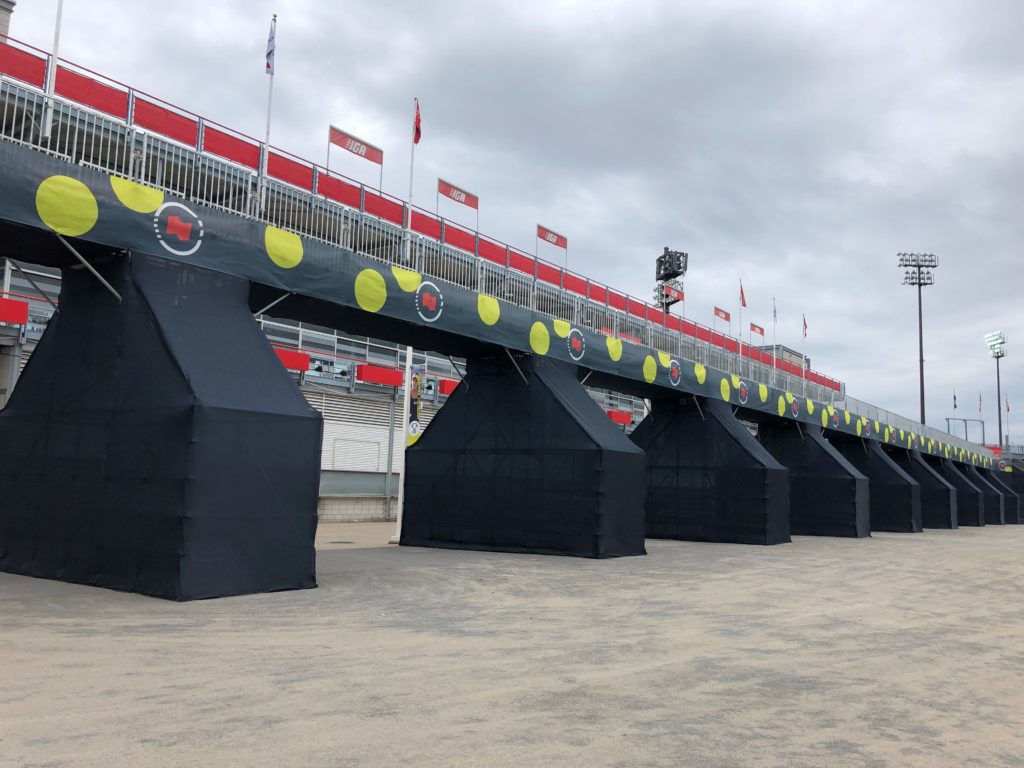
As far as the number of spectators, Centre Court has a capacity of 11,800 ticket holders in Montréal (11,000 in Toronto), so, to comply with social distancing measures, we can only welcome 5,000 fans. People will have access to Centre Court and not the outer courts. On site, they must wear a mask, which they can remove in their seats. Only two food concessions will be open on the site in Montréal (none in Toronto), so fans are invited to use the in-seat food and beverage service in the tournament app.
Click here for more on the health measures at the National Bank Open.
Novak Djokovic goes off the rails
A derailment is certainly what appears to have happened to Novak Djokovic in his Olympic semifinal and the series of unfortunate events that followed.
In the weeks and months since the start of the season—and especially since Naomi Osaka lit the Olympic flame—all signs were pointing to Nole’s golden moment.
But it wasn’t to be.
In his first four matches at Ariake Tennis Park, the World No.1 was right on track. He spent a total of 4 hours and 55 minutes on the courts (an average of 74 minutes per match!) and dropped only 17 games (an average of four games per match!!).
By the time he reached the semis, he was full steam ahead to exact the same pain on Alexander Zverev as he had on all his previous rivals. But in the sixth game of the second set, up 6-2, 3-2, Djokovic went off the rails.
So far off, in fact, that the German ace started winning. He quickly secured eight consecutive games and broke the Djoker four times on his way to a 2-6, 6-3, 6-1 triumph that stunned the tennis world.
As Yogi Berra apparently liked to say: “It ain’t over till it’s over.” Case in point.
The next day, in his bronze medal match against Pablo Carreño Busta, Novak Djokovic sent one racquet flying, smashed another on a net post and went home a loser. Worse still, claiming a shoulder injury, he then withdrew from his mixed doubles match, robbing his partner Nina Stojanovic of a chance at winning a rare honour in her tennis career.
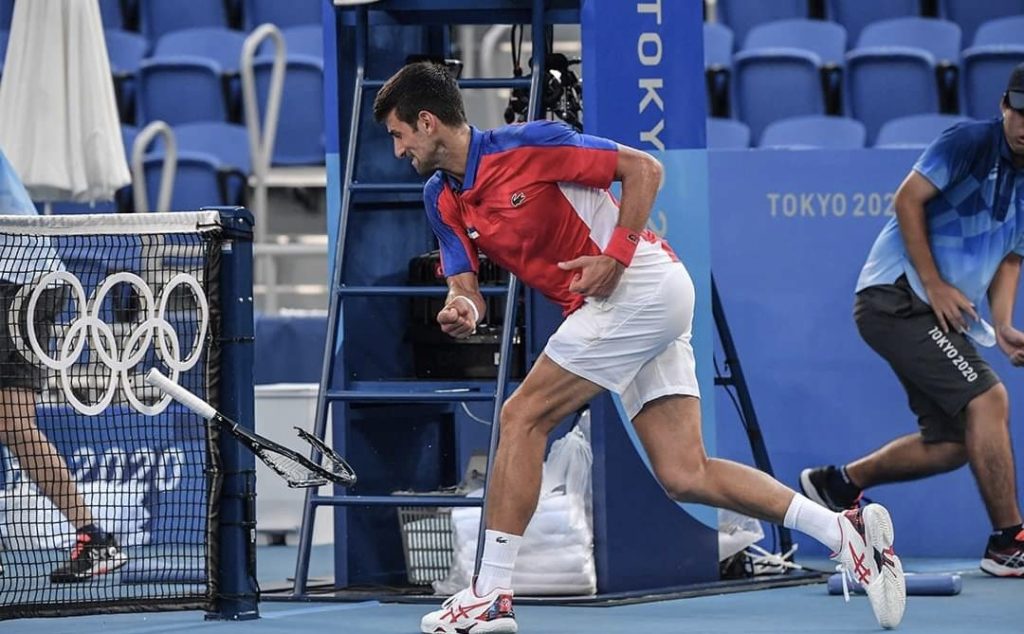
Was it really his shoulder or just his ego? Did he need to rush out when his train left Tokyo Station? Was it to prepare for something bigger like the US Open and his Grand Slam?
So much for Olympic values.
Tokyo sizzle
Novak Djokovic is far more than talent and temperament. He also has the stuff of a leader—something he proved at the start of the Olympic Games, when he raised the alarm about the extreme heat on the courts.
After his opening round match, he suggested organizers start the competition a little later, noting that his was the last match and there was still plenty of time in the day to play: “I don’t understand why they don’t start matches at, say, 3 p.m. We still have seven hours to play. They have lights on all the courts.”
But the tournament didn’t budge, and the complaints kept rolling in. During his tough match in sweltering temperatures, Daniil Medvedev said he’d fight until the end but asked the chair umpire who’d take responsibility if he died in the suffocating conditions.
Then, Paula Badosa suffered a dramatic episode of heatstroke in her match against Marketa Vondrousova. It took the Spaniard being forced to retire and leave the court in a wheelchair for the ITF to change the schedule.
But it was too little, too late. The damage was done, and all the apprehensions surrounding the city’s difficult weather conditions proved to be justified several times over.
When the Games were awarded to Tokyo in 2013, the broiling summer heat was immediately raised as a potential issue, since average highs tend to hover around 30°C with a relative humidity of 70%. The last Tokyo Games in 1964 were held in October, which was perhaps a wiser choice.
Get in touch with me!
Email: privard@tenniscanada.com
Twitter: @paul6rivard
Follow all our Canadians in action here.
